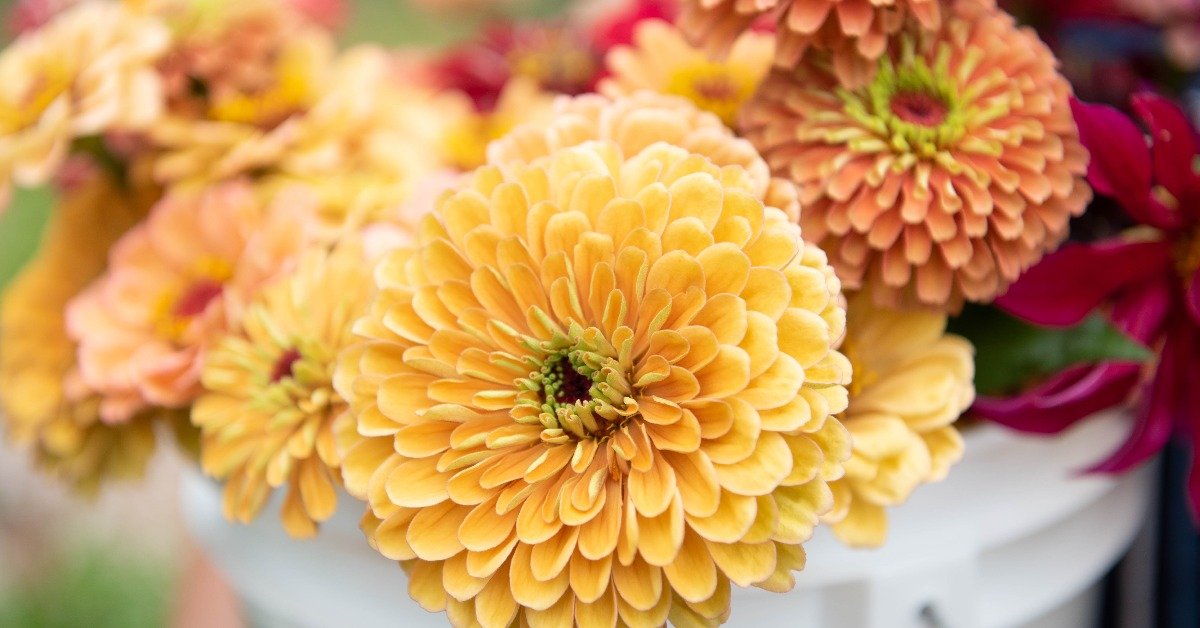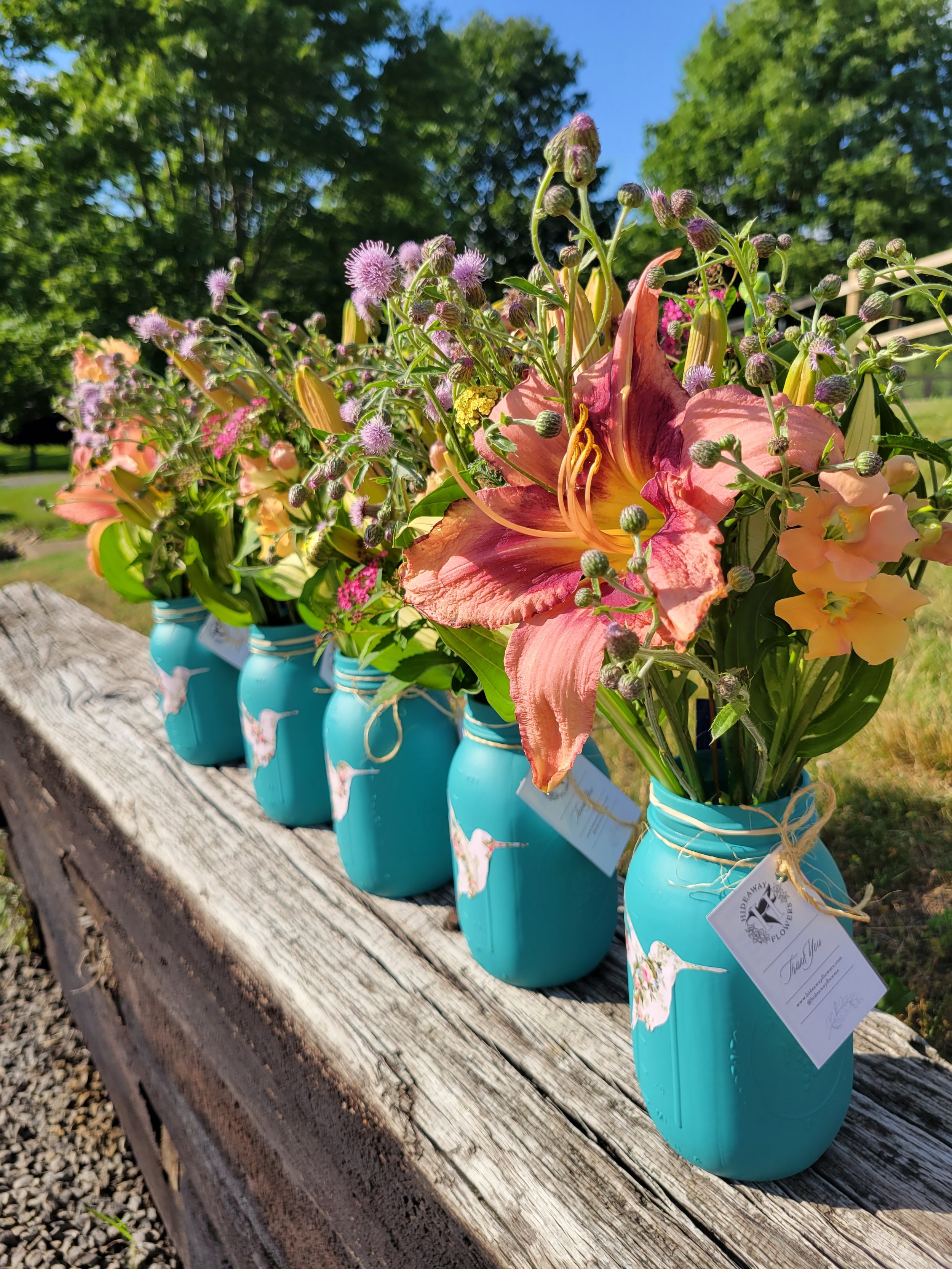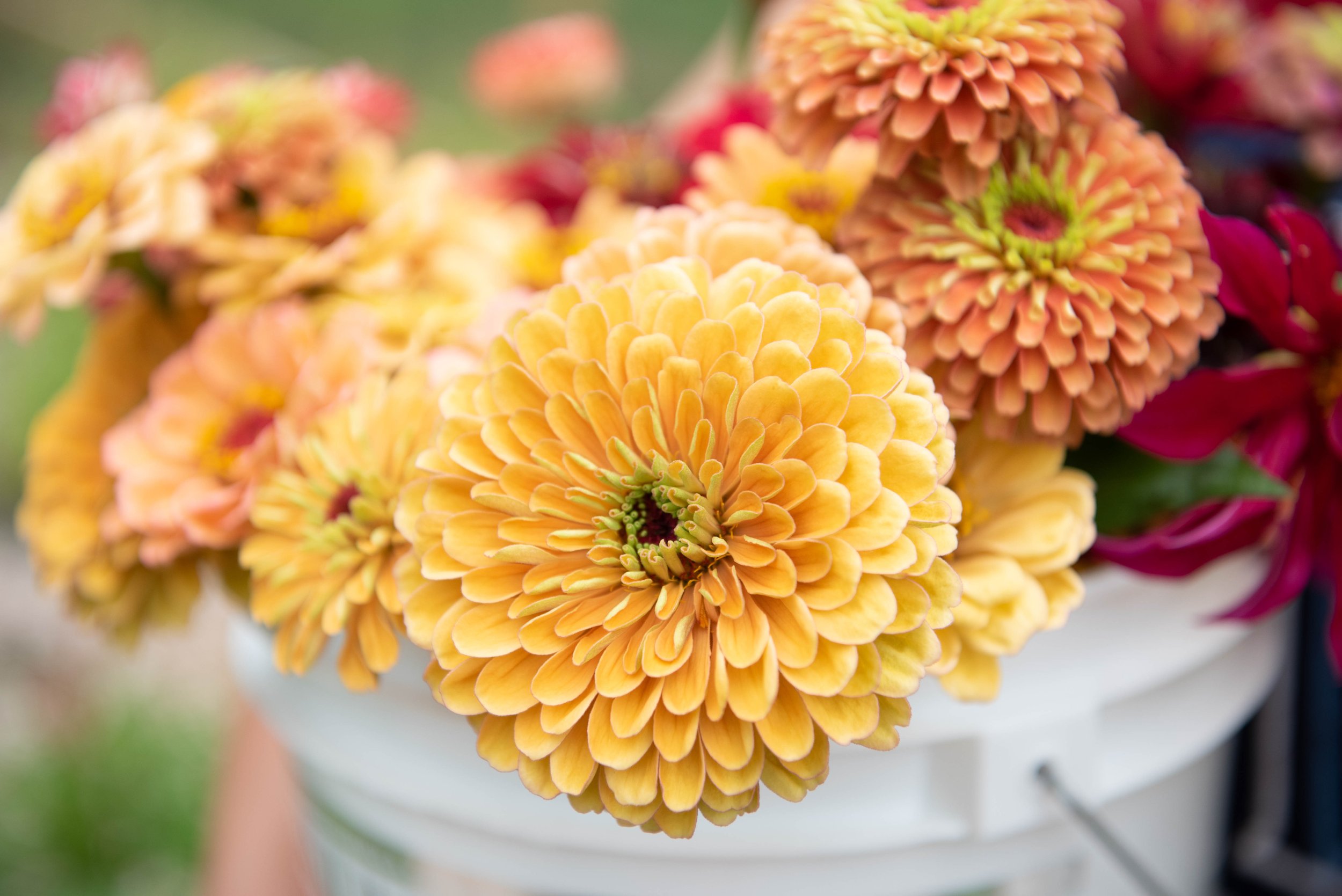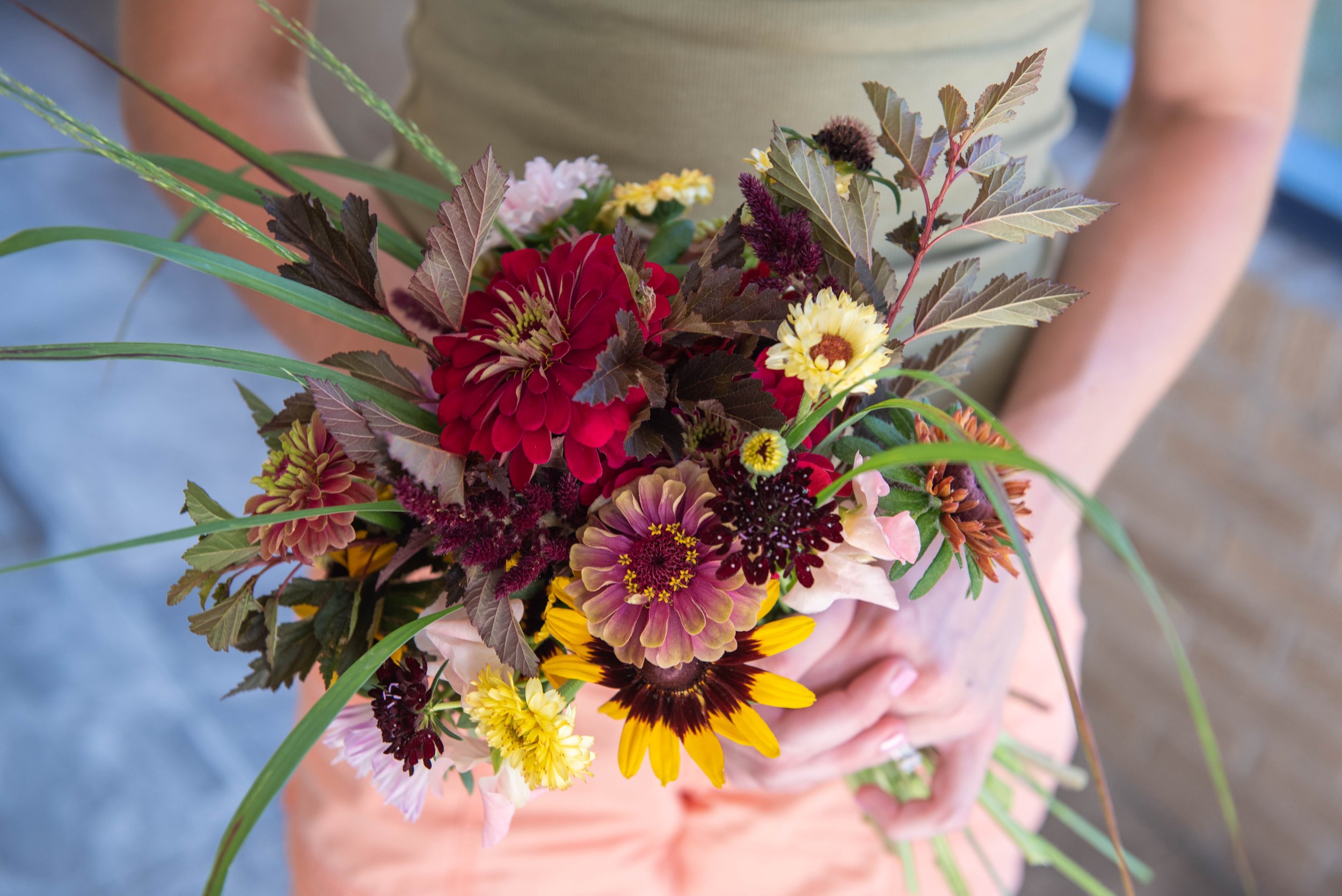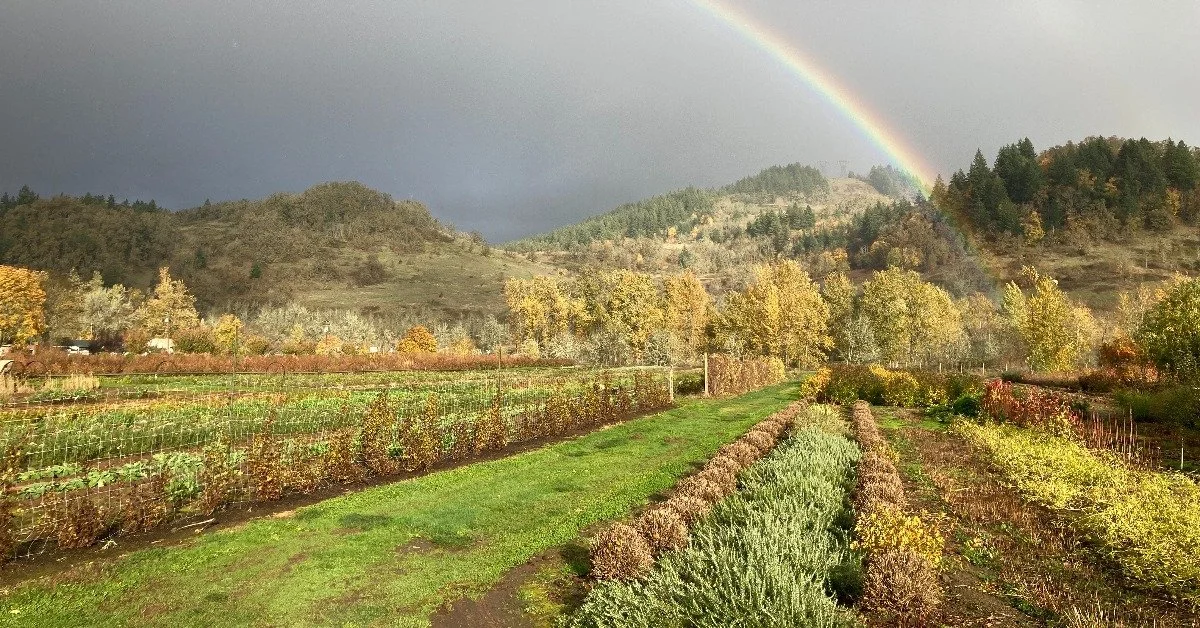Helpful Tips for Starting a Flower Farm Business from Scratch
Starting a business is a leap of faith.
Have you been thinking about starting a flower farming business? You're not alone!
At the beginning of 2021, I launched a small flower farming business named Hideaway Flowers. I had already been dabbling in the cut flower world as a hobby for a few years, and I loved growing and sharing those flowers so much that it felt natural to transition my hobby into a small floral side-hustle to make some extra cash.
It sounded so simple when I laid out my plan in my head. I'd start an Instagram page, make a website, reach out to some friends and family, and I would be just fine.
I wildly underestimated the amount of work required to launch the business, let alone operate it all season long. But despite my initial naivety, I dove right into the process, successfully launching my business and making it through my first season. I learned so much this first year!
In this article, you'll find a few steps you can take to launch your own business, as well as some of the business lessons I learned from my first season running a flower farm.
Establish a Flower Farming Business Name
Choosing a business name for your flower farm will either be a no-brainer for you, or it will be one of the single most difficult tasks you will encounter throughout the entire business creation process.
Finding a unique name that represents you and your brand while appealing to your target audience can be a challenge. If you're having trouble coming up with a name, it can be helpful to write down words or phrases that come to mind when you think of your flower business.
A name is a very personal thing, and you may have your heart set on something particular, but there are two important things that you should consider before committing to a name for your business.
1.) Make Sure Your Flower Business Name Is Available in Your State
Has your business name or something similar already been registered by someone else with your Department of State?
It is important for legal purposes to make sure your potential business name, or even something close to your name, has not already been registered with your state.
When I was brainstorming name ideas, the Pennsylvania Department of State had an easy-to-use business registration online search that could quickly tell me if my potential business name was already registered.
2.) Make Sure a Web Domain Name for Your Business Is Available
Is there a web domain name available that will make sense with my business name?
If you plan to set up a website for your business, it is a good idea to make sure your potential domain name is available. A domain name is the web address that will host your website. Most people choose to use their business name or a shortened version of their business name as their domain name, which is why it's necessary to check domain name availability before settling on a business name.
The most common domain names end in .com, but they can also end in .us, .co, or a variety of other endings. For example, I wanted to make sure www.hideawayflowers.com was available for my business. You can use a search engine like www.instantdomainsearch.com to see if your domain name is already in use.
Search engines like this will also show you variations of your domain name that are available if your original choice is taken. Also, keep in mind that customers are most likely to visit and remember websites with shorter domain names that end in .com.
Registering your business will look different from state to state.
Register Your Flower Farm Business with Your State
Once you have established your business name, the next steps are to register your business with your state and apply for a Federal Tax Identification Number (EIN).
An EIN is a unique nine-digit number assigned to your business by the IRS for identification purposes. The process is different in every state, so I highly recommend consulting a local tax expert before getting started. Your tax expert can also help you decide what type of registration you want for your business (Individual/Sole Proprietor, Limited Liability Company, etc.) based on how you plan to operate your business.
The difference between these business types can be complicated, but based on my business model and discussions with my local tax experts, I chose to register as a Limited Liability Company or LLC. In Pennsylvania, I had to receive an EIN before registering my business entity with the state. Applying for an EIN was a simple process I could do entirely online, and it took less than a day to receive approval.
Registering my business with the Pennsylvania Department of State was also a simple online process. Still, they took about three weeks to process my registration and issue my paperwork.
I't’s also essential at this stage to determine if you are required to pay state sales tax. Again, consult your local tax expert for guidance. In Pennsylvania, I must pay sales tax, so I had to register online for a sales tax number. You will have to sort through and organize a lot of paperwork and registration numbers at this stage, so I recommend establishing a good filing system from the start that will be easy to maintain throughout the year.
Write Out a Budget for Your Flower Farm Business
Creating a budget is one of the most important steps to take when setting up your business and something you should do as early as possible.
This is one of the hardest and most time-consuming steps to accomplish, but creating a solid budget is critical in ensuring financial success for your business, especially during the first few years of operation.
“Don’t underestimate the worth of your product, especially in this industry where the demand for locally grown flowers is on the rise.”
It’s easy to get carried away with purchases during the season (I’m looking at you, seed catalogues) and lose track of how much you are earning versus spending, so having something on paper will help keep you on track throughout the year.
Create a Business Plan
Before you start listing out your expenses and anticipated income, take a moment to consider what your business goals are. Having a clear business plan really helps here. I could dedicate an entire blog post to the details of creating a solid business plan, so I will not get into the weeds now, but I encourage you to determine what your goals are for your first season and the next few years.
What kind of profit are you looking to make? Are you trying to fund an expansion or a new piece of equipment? Nailing down these plans at the beginning will make it easier to establish a budget to meet your profit goals and ultimately create a sustainable business model.
plan a 15% buffer into your Flower Farming budget.
Make a List of Your Yearly Expenses
After you have determined your profit goals, the next step is to list your anticipated expenses for the year.
If you find it too overwhelming to think about the entire year, it might be helpful to break it up by season.
Make sure you're thinking about all aspects of your business when you list your expenses. You will need the essentials like seeds and seed trays, but there are many more obvious and hidden expenses that you will need to think about.
Questions to consider when determining your flower farming expenses include the following:
Do you plan to supplement your soil with compost and other nutrients? Depending on the size of your growing space, the cost of compost can add up quickly.
Will you need to purchase or rent any specialized tools or machinery to prepare your growing space?
Do you have the equipment necessary to maintain and care for your flowers throughout the season? Hoses, fertilizer, metal stakes, and netting for support are some things to consider.
Will you need additional materials to create your final product? If you are selling market bouquets, you will need items such as mason jars, rubber bands, and craft paper.
One big expense that I missed when I put together my first budget was the fee required to buy my web domain and set up an online store.
There are many expenses to consider, so be as thorough as you can in this step, even if it seems tedious. I also recommend building a contingency of 15% into your budget to help cover those inevitable surprise expenses.
To do this, total up your planned expenses, multiply that number by 0.15, and add the result to your total expenses.
Set an Anticipated Income
After you've planned your expenses for the year, it's time to think about your anticipated income. This step requires a fair amount of market research and some detailed thought on your part.
The sale price of your product will vary depending on location, availability, and demand, which is why it is necessary to do some in-depth research before you set your price.
Check out the prices of other local flower farms and use that as a loose guide to set your prices. Remember that you want to be competitive, but you also want to hit your profit goals.
And most importantly, don't underestimate the worth of your product, especially in this industry where the demand for locally grown flowers is on the rise.
Estimate Your Sellable Product
The second part of the income equation is estimating the quantity of product you will sell.
Think about how many flowers you can produce in the space available to you and the window in which you can grow, harvest, and sell your product. My approach was to tally each plant in my planting schedule, estimate the flower yield per plant based on past experience or some additional research, and use that information to roughly determine how many flowers I would have available to sell during each part of the growing season.
Since my main product was bouquet subscriptions, I could do some quick math to determine how many bouquets I could sell based on my expected flower yield. While this method sounds very detailed, it turned out to be a valuable tool in setting my budget and a good metric to judge my production during the growing season.
Assess and Reassess Your Flower farm Budget
So now comes the big equation. If you subtract your expenses from your projected income, are you hitting your profit goal? If you are, then proceed full steam ahead!
If not, take a look at your expenses and see if you can make any cuts (maybe you don't need those rose-gold plated snips after all). It's also okay at this stage to reassess your profit goals. It is entirely normal and acceptable for a new business to break even their first year.
The most important part is to make sure you don't land in the red and end up spending more than you earn.
Using a system to track your expenses will help you stick to the budget.
Tips for Following a Cut Flower Farm Budget
Creating a solid budget will set you up for success, but how can you make sure you are following your budget and operating your flower farming business within your margins?
It’s easy to lose sight of your budget and your goals during the busy months of the growing season, but there are a few steps you can take to make sure you stay on track:
Creating spreadsheets to track your sales and expenses is a crucial organizational step to ensure you meet your budget goals. There are many free excel templates available online for these purposes, or you can choose to make your own.
Try to stay on top of keeping these updated, even during the busy growing months. It is easy to neglect this part of the business, but falling behind on this step will only make for an overwhelming task at the end of the season trying to track down old sales records and receipts.Save your receipts! At the end of the tax year, you will submit a record of your sales and your business-related expenses on your tax return. Your business expenses can be used to reduce your taxable income, otherwise known as a tax write-off.
You can potentially write off almost all of your traditional business expenses (seeds, equipment, etc.) However, write-offs can also be things like mileage and gas for flower deliveries and trips to the home and garden store for supplies, so be sure you are keeping track of those expenses as well. The tax code is complicated, so be sure to work with a local tax expert to understand your taxes and maximize your profit.Lastly, set up a business banking account. This will help distinguish personal expenses from business expenses and make tracking cash flow for your business a lot easier.
The requirement for opening a business banking account in Pennsylvania is to have an EIN and proof that my business is registered with the state. You should also be able able to apply for a business credit card when you open an account, which could include some added benefits like a cash bonus and free financing for a certain period.
Taking these steps to establish your business can seem overwhelming at first, but I promise you it is worth it.
Starting any business can be an incredibly intimidating venture, requiring a certain level of imagination and ambition. But with a little organization, a lot of patience, and hopefully some helpful tips from this article, it is totally possible for anyone to launch and operate a successful small business.

